
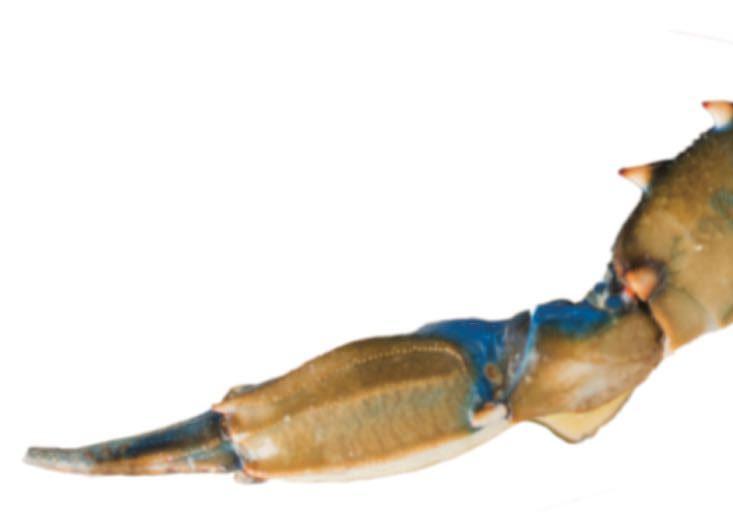
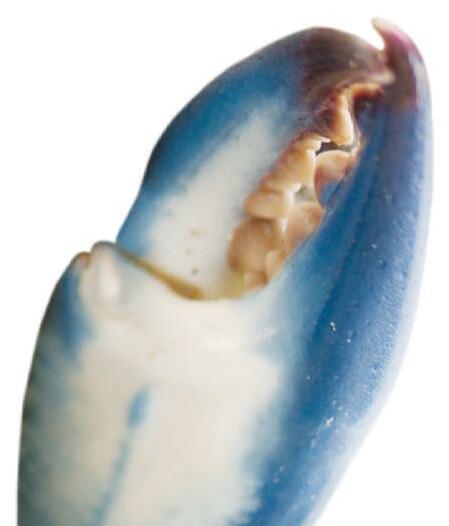
THE MAGAZINE OF JEKYLL ISLAND SPRING/SUMMER 2018

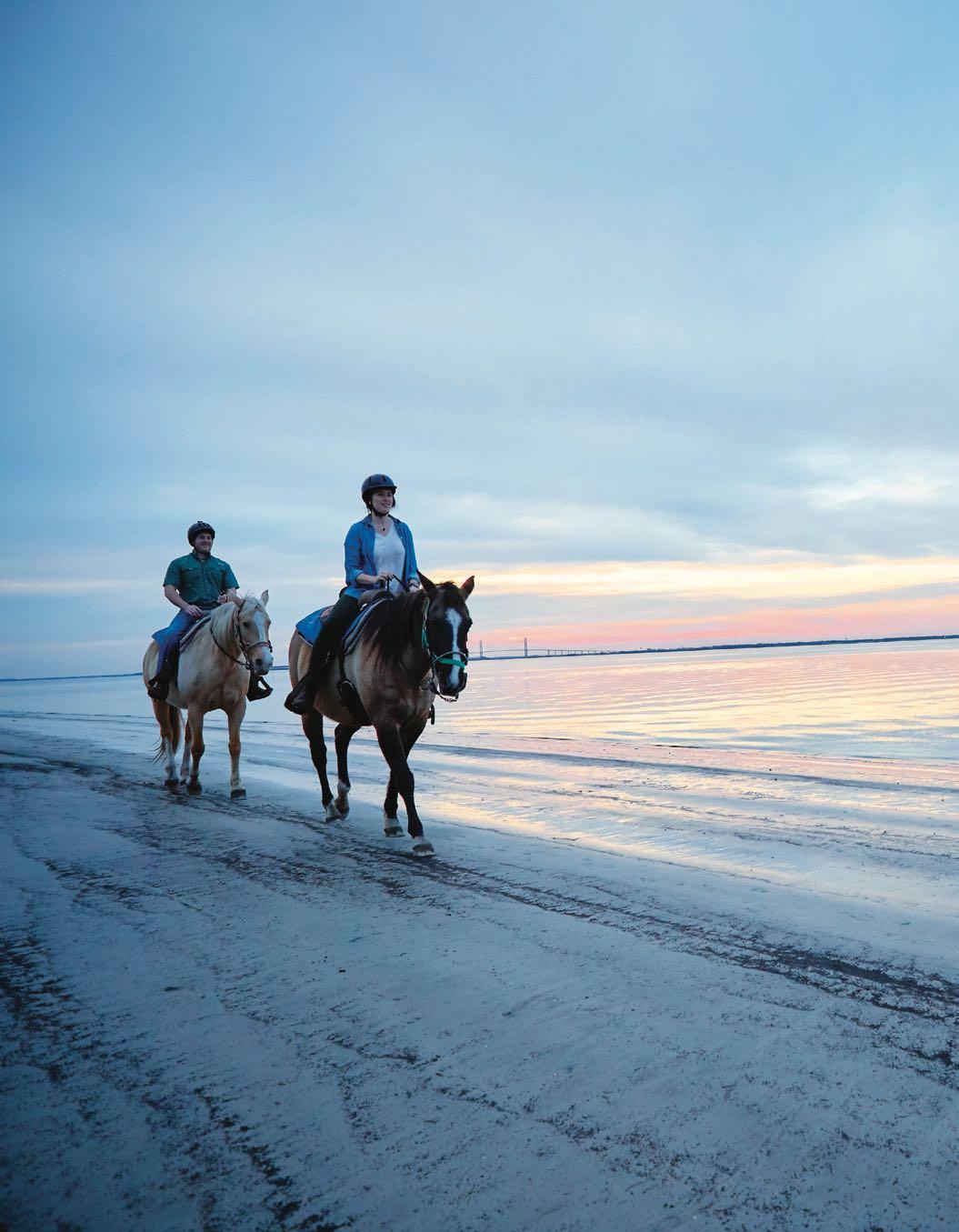
November 12 – 18 The PGA TOUR travels to the Golden Isles for the 9th annual RSM Classic hosted by Davis Love III. Use promo code JEKYLL2018 at RSMClassic.com for discounted tickets 34 Snake Charmed On the trail with Jekyll’s rattlesnake trackers. By Justin Heckert 52 Lost Jekyll The stories behind the most interesting historic sites you can never tour. By Wendell Brock 58 Beach Views A guide to hitting the sand on Jekyll’s serene shores. By Bill Warhop 68 Meet the Locals It’s a state park and island paradise. For some, it’s also home. By Tony Rehagen Only on Jekyll Five unforgettable experiences you can’t have anywhere else. By Elizabeth Florio, Justin Heckert, and Bill Warhop 42 1 gregory miller Spring/Summer 2018 • Vol. 2 No. 2 THE MAGAZINE OF JEKYLL ISLAND
A COASTAL CLASSIC

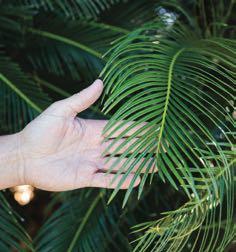


2 departments runners & palm: gabriel hanway ; historic gates: brian austin lee traces Historic Gates Not as old as they seem flora Ladies’ Tresses Zooming in on Jekyll’s native orchid fauna Diamondback Terrapin Helping turtles cross the road guardian Cliff Gawron Seeding Jekyll’s lush, leafy future firsts Transcontinental Phone Call A milestone in communications history artisan Extraordinary Gentlemen Jekyll gets graphic novel treatment my jekyll Lisa and Tony Hammett The avid runners find a retreat paths The Seafarer A momentary clamor on calm waters 14 18 20 23 26 29 32 76 32 14 23
executive director
C. Jones Hooks



Meggan Hood
marketing communications manager


Regan Young
creative director
Claire Davis
To
Find
@jekyll_island


about 31 · 81
Published
publisher
Sean McGinnis
editorial director
Kevin Benefield
design director
Cristina Villa Hazar
senior editor
Elizabeth Florio
art director
Katy Miller
photo director
Kristin Kellogg
associate publisher
Jon Brasher
travel sales director

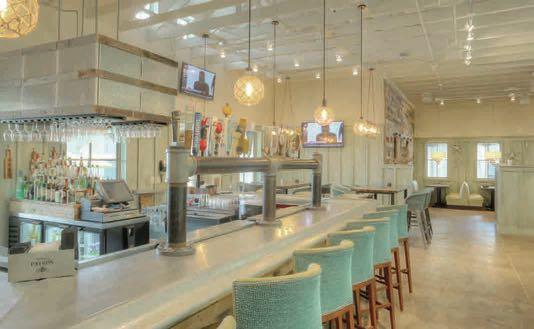
Jill Teter
production director
4
On the cover
Photograph by Brian Austin Lee
twice a year, 31·81 pairs stunning photography with thoughtful articles to tell the stories of Georgia’s unique barrier island.
Island lies at 31 degrees north latitude and 81 degrees west longitude.
Jekyll
subscribe
subscribe at no charge, sign up at jekyllisland.com/magazine.
subscription
To update your
information, email magazine@jekyllisland.com.
100 James Road • Jekyll Island, GA 31527 jekyllisland.com
senior director of marketing
Photography courtesy of Jekyll Island Authority unless otherwise noted. This magazine was published by the Jekyll Island Authority in cooperation with Atlanta Magazine Custom Media. All contents ©2018. All rights reserved.
Whitney Tomasino us on social media:
Beachcombers welcome. . . 70I North Beachview Drive | 9I2.635.22II holidayinnresorts.com/jekyllisland
@JekyllIsland
JEKYLL
Dear friends,
One of the most exciting characteristics of Jekyll Island is that it’s always changing. Years ago I said Jekyll is like an old friend you haven’t seen in a while: The changes are immediately noticeable, but you still recognize all the things that made them special and it’s like no time has passed.
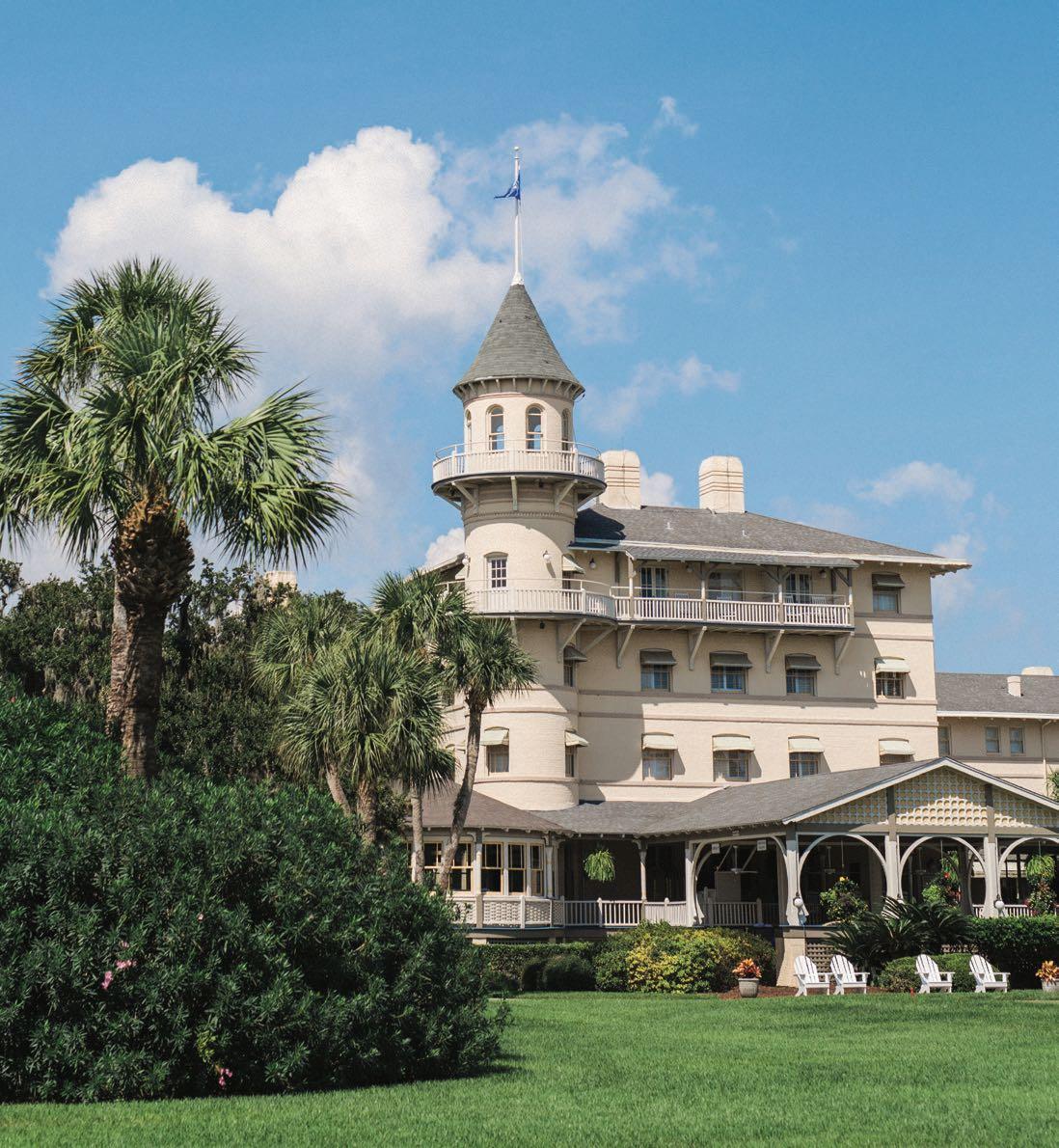
As a native Georgian, I’ve been fortunate to vacation on Jekyll as a child and, now, to reside on this beautiful island. I have witnessed many changes to the scenery, planned and unplanned. Most recently, two hurricanes—Matthew and Irma—brought about some of the unplanned changes. Sustained winds and high tides from these storms shifted sand and trees along the coast, making the project of shoring up the rock revetment on the north end a priority. Though we aren’t always happy about these unexpected events, they are part of the natural life of a barrier island. And while Driftwood Beach may look a little different now than on your last visit, the views are still as stunning as ever.
In the coming months, I look forward to leisurely strolls on Jekyll’s southernmost beaches. Thanks to natural accretion, wide stretches of dunes now separate the oceanfront houses of fifty years ago from the water, making the homes invisible to the beachgoer. The tranquility of this part of Jekyll’s shoreline makes me feel as if I’ve stepped out of the world and into a private oasis.
I invite you to visit Jekyll soon and see all the ways this beautiful island has changed—but most importantly all the ways it remains the same.
Jones Hooks
Executive Director, Jekyll Island Authority

6 jeremy harwell welcome
In the coming months, I look forward to leisurely strolls on Jekyll’s southernmost beaches.”
ISLAND AUTHORITY BOARD OF DIRECTORS
Michael “Mike” Hodges chairman St. Simons Island, GA
Robert “Bob” W. Krueger vice chairman Hawkinsville, GA
William “Bill” H. Gross secretary/treasurer Kingsland, GA
Joy Burch-Meeks Screven, GA
Mark Williams commissioner, georgia dnr Atlanta, GA
Dr. L.C. “Buster” Evans Bolingbroke, GA
A.W. “Bill” Jones III Sea Island, GA
Hugh “Trip” Tollison Savannah, GA
Joe Wilkinson St. Simons Island, GA
Amid lush grounds at the river’s edge, the Jekyll Island Club Resort is the centerpiece of Jekyll Island’s celebrated Historic District. This National Historic Landmark is the Island’s only Four-Star resort, and offers both casual and fine dining. (866) 934-4133 | jekyllclub.com
In Praise of Reptile People
Some folks have a soft spot for slithery things. We’ve profiled a few of them in previous issues: park ranger Breanna Ondich, who caught newts and garter snakes in her yard as a kid. Georgia Sea Turtle Center director Terry Norton, who counted toads and iguanas among his childhood pets. In this issue you’ll meet Joseph Colbert, charged with tracking Jekyll’s population of eastern diamondback rattlesnakes. The former Marine encountered his first rattler while in boot camp in South Carolina and was instantly intrigued.
Generally speaking, rattlesnakes have a PR problem. In at least four states, Rattlesnake Roundup festivals still reward amateur snake hunters for removing these so-called menaces from the wild. All but one Georgia town has abandoned the tradition, recognizing that eastern diamondbacks are rapidly vanishing and pose no real threat to humans (see “Snake Charmed,” page 34). But the idea persists that killing them is a public service.
The only specimens I collected as a kid came from the Cabbage Patch, but it’s always seemed to me the height of vanity to assume humans deserve their gargantuan share of this planet at the expense of other creatures. Jekyll offers an intriguing experiment in coexisting. Tourists abound; some people even call this state park home (meet them on page 68). But their collective footprint is limited to roughly one third of the land, and they are surrounded by wildlife champions like Colbert.
Jekyll is a magnet for such guardians: Landscape director Cliff Gawron has cataloged every native plant on the island and added hundreds of live oaks to the scenery (page 23). A team of preservationists feels about aged porticoes and crumbling tabby what Gawron feels about vegetation. They’ve lost some battles with time—read about Jekyll’s vanished buildings on page 52—but their successes are, if you will, monumental.

Of course, like the shorebird that migrates to far-off continents, this barrier island depends on the health of the larger planet. But when news is often bleak in the natural world, Jekyll is a bright spot.
Elizabeth Florio Editor

1 Gregory Miller is an Atlanta-based photographer who enjoys being outdoors, biking, hiking, camping, or kayaking as often as possible, either with friends or his family of four. “I

brought my family down to Jekyll a few months before the shoot,” he says, “but the people and places I encountered on this assignment helped me develop a deeper understanding of what it

means to live and play here.”
2 Bill Warhop is a former managing editor of Atlanta magazine, a part-time writer, and a freelance editor with
Simon & Schuster, St. Martin’s Press, and other national book publishers. He just moved to the greener pastures of Richmond, Virginia, with his girlfriend and dog after three years among the brownstones of Brooklyn. And he really does love long walks on the beach.
9 contributors
editor’s note 8
miller: fernando decillis ; warhop: maria carter
It’s always seemed to me the height of vanity to assume humans deserve their gargantuan share of this planet at the expense of other creatures.”
1 Fly Delta directly into the heart of the Golden Isles. BrunswickGolden Isles Airport- BQK flygcairports.com Daily jet service to and from Atlanta Delta.com
APC-24913 31-81 half page ad_Layout 1 3/19/18 3:13 PM Page 1
2 vitor lindo
INDEPENDENCE DAY CELEBRATIONS
July 3–7
Get a jump on the holiday by taking in Jekyll’s Third of July fireworks, best viewed from eastside beaches. On the morning of July 4, locals and visitors decorate golf carts, bikes, strollers, and pets and march through Jekyll’s historic district in the old-fashioned Independence Day Parade If spectating is more your speed, catch the action from the Skeet House or the Sans Souci lawn. The fun continues through the day with Red, White & Bounce, as water slides, bounce houses, and sidewalk sales take over the Village Green. On July 7, a special patriotic edition of the Beach Village Music Series closes out the week. jekyllisland.com/independence

Visit
Movie on the Green
Last Saturday of the month, May–November
The crashing waves of the Atlantic provide added sound effects during this free movie series on the Village Green. Bring blankets or beach chairs and enjoy family-
Beach Village Music Series
June 2, July 7, August 4, September 1
Bring a picnic to the Village Green for this new summer music series overlooking the ocean. Dance to your heart’s content, or just sit back and enjoy free shows from the Golden Isles Strummers, Katie Fair, the Second Chance Band, and on July 7, a special patriotic event featuring the Jacksonville Jaguars drum line. Food is available for purchase from surrounding merchants. jekyllisland.com/bvms
Shrimp & Grits Festival
September 14–16
The beloved festival returns to showcase one of the South’s most iconic dishes alongside live music, craft beer, a carefully curated artists’ market, a kids’ zone, and wildlife encounters.
Tree Lighting
November 24
The official start of the holiday season, the lighting of Jekyll’s Christmas tree includes live music, pictures with Santa, and fireworks.
Skating Village
November 2018–
January 2019
Committed to Jekyll Island
At Ameris Bank, our customers and the community are always at the center of everything we do. From big-ticket decisions to everyday services, we’re committed to serving our neighbors on Jekyll Island.

friendly favorites such as the LEGO Batman Movie, Wonder Woman, Frozen, and Finding Dory. Movies start at sunset; arrive early to snag a good spot or enjoy the many shops and restaurants in Beach Village. jekyllisland.com/movies
Swim-In Movies
June 2 and July 1 Pool party! Saddle up on an inner tube at Summer Waves Water Park for movie night in the Frantic Atlantic wave pool. Enjoy the action of Despicable Me 3 on June 2, then channel your inner Ariel while watching the Little Mermaid on July 1. Movies start at 8:30 p.m. jekyllisland.com/swimin

Practice your figure eights on this oceanfront rink, where $5 includes skate rental and thirty minutes on the “ice,” and hot chocolate provides the perfect post-skating treat.
Georgia–Florida Golf Classic
October 24–26
This annual golf tournament (complete with championship ring) brings the long-running SEC football rivalry to the Jekyll Island Golf Club.
10 datebook
jekyllisland.com/events to learn more about these and other events.
31 MAIN STREET, SUITE 101, JEKYLL ISLAND • AMERISBANK.COM
PROUDLY SERVING JEKYLL ISLAND SINCE 2000
SAVE THE DATE


13 JEKYLL ISLAND Jekyll researchers are shepherding diamondback terrapins safely across the causeway
explorer More on page20 • Oceanfront Event Space • 200 Rooms including 13 suites • Exciting Outdoor Team Activities • Next Door to New Beach Village and Convention Center Visit westinjekyllisland.com or call 912.635.4545 A Year Round Destination Traces p.14 | Flora p.18 | Fauna p.20 | Guardian p.23 | Firsts p.26 | Artisan p.29 | My Jekyll p.32
Photograph by GREGORY MILLER
Historic Gates
The welcoming landmark is a nod to an enduring architectural myth
BY REBECCA BURNS
As they pass the ornate Spanish-style entrance towers on the causeway, many visitors to Jekyll Island assume they are glimpsing a century-old monument, possibly even a vestige of the island’s pre–Revolutionary War history. Not quite.


The gates were erected in 1958 during the heyday
of the state’s efforts to transform the former billionaires’ retreat into a public paradise. Constructed of concrete block and stone, the gates might visually hark back to Spanish missions, but they are in fact “as fifties as fifties can be,” says Taylor Davis, historic preservationist for the Jekyll Island Authority. While Spanish missions indeed operated on the
14 Jekyll Island’s Award Winning Hotel 60 S. BEACHVIEW DRIVE JEKYLL ISLAND, GA 31527 888-635-3003 DAYSINNJEKYLL.COM Come along with us and “Coast Awhile”!
brian austin lee traces
island prior to the arrival of English colonists, no ruins of that era remain. Visitors in the early 1900s erroneously assumed some of the tabby structures were remnants of the missions, a myth reinforced in news accounts of the time and perpetuated, in some cases, into present day. Spanish-style buildings with tiled roofs and stucco walls were erected on Jekyll in the 1920s and 1930s in a sentimental—if historically inaccurate—nod to that legend.
In the 1950s and 1960s, cables strung between the gates conveyed a block-letter greeting to arriving vacationers. One of the gates also housed a more prosaic welcome amenity: restrooms. Today, the towers are framed by rows of cabbage palms, and their signature design feature, bas-relief replicas of the Jekyll club seal, is somewhat worse for wear.

The emblem—a shield bearing a scallop shell and cotton boll—originated in the 1930s and eventually became the logo of the Jekyll Island Authority before falling into disuse. Davis will be part of a team that will




restore the seals, a project that is still in planning stages and will require some delicacy.


Researchers at the University of Georgia recently learned that travelers pick destinations based on how photogenic—or Instagram-ready—they are. While Jekyll’s entrance gates may have lost some Instagram appeal when the retro signage went down, they do attract fans. Davis, who drives through the gates to and from work every day, says he regularly spots people pulled over and posing for photos. For him, it’s an understandable impulse. “The gates are just cool,” he says. “They really serve as Jekyll’s handshake to the rest of the world.”
DID YOU KNOW? When the state took over Jekyll in the late 1950s, many of the seemingly historic elements added to the island—including the entrance gates and a boardwalk—were


constructed from concrete. In a cost-cutting effort, the Jekyll Island Authority opened its own concrete factory, saving some $50,000 in the process, according to a 1958 Atlanta Constitution report.

16 photo credit traces ...or the next chapter of your life. Beach Village Shopping Center 21 Main Street, #107, Jekyll Island, GA 31527 (912) 635-3301 | jekyllrealty.com Jekyll Realty the island’s first real estate company
While Jekyll’s entrance gates may have lost some Instagram appeal when the retro signage went down, they do attract fans.”
archival images courtesy of the jekyll island museum archives; brian austin lee
Left: An architectural rendering shows the gates prior to their 1958 completion. Top: Tourists pose in the early 1960s. Above: Weathered sculptures of the Jekyll club seal show a scallop shell and cotton boll.
Ladies’ Tresses
A close study of the coiling beauty
 BY BILL WARHOP
BY BILL WARHOP

Tread softly through the tall grass to discover the swirling white sprays of Spiranthes vernalis. You might spot Jekyll’s native orchid growing alongside ponds or in ditches where the soil is damp.
There are twenty-seven species of Spiranthes—meaning “spiral”—in North America, many almost indistinguishable. Ecologists’ best guess is that Jekyll’s flower is the vernalis, or spring ladies’ tresses, blooming in late March and early April.

Each stem holds up to fifty flowers, each about the size of a pinky fingernail. Watch the ground for bumblebees and honeybees, its primary pollinators.
Of the 200-plus orchid species in North America, half are endangered or threatened. Georgia’s Spiranthes vernalis is “apparently secure,” in conservation-speak: uncommon but not rare, though some evidence indicates a decline.
Native Americans used ladies’ tresses in herbal remedies. Cherokees bathed their babes in a tea of Spiranthes leaves so they’d grow fast and healthy.
photo credit flora Memories for a Lifetime 721 North Beachview Drive | Jekyll Island, GA 31527 912.635.2256 | beachviewclubjekyll.com 18
shitterstock.com
Diamondback TERRAPIN

This
of a reptile gets a protective boost from the Georgia Sea Turtle Center
BY CANDICE DYER
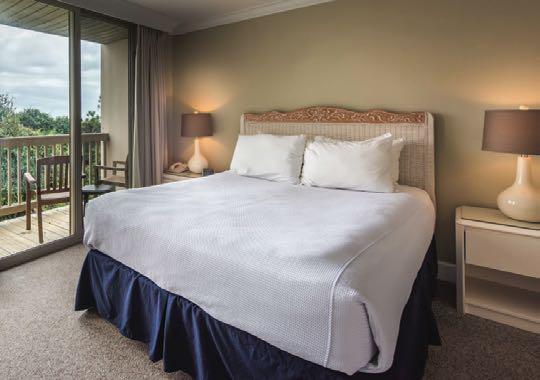
The diamondback terrapin derives its name from the angular, faceted designs on its shell—but don’t expect to see much family resemblance among them.

“Each terrapin has a shell that is as different and singular as a fingerprint or a snowflake,” says Michelle Kaylor, the rehabilitation coordinator for the Georgia Sea Turtle Center (GSTC). “They are actually quite beautiful.”
Seven subspecies of the turtle use their webbed feet to bob along the shore, feasting on fiddler crabs and basking on marsh banks from Cape Cod to Texas. Jekyll is home to Malaclemys terrapin, the continent’s only turtle species to live in brackish water. With assistance from the University of Georgia, the GSTC has ramped up its research in
the past ten years. Visitors to the island may have noticed flashing “turtle crossing” signs on the Jekyll Island causeway. Researchers have identified “hot spots” where a female terrapin is most likely to cross the causeway to lay her eggs. They have also installed nest boxes with predator-proof caging in some of these areas. Since 2009, their efforts have saved almost 2,500 turtles.

Despite these measures, some terrapins do not survive long enough to reproduce. The GSTC collects dead and injured animals to incubate their eggs. If a terrapin can be rehabilitated, it will be released into the marsh.
Females enjoy a
distinct advantage. In what scientists call “sexual dimorphism,” they are twice as large as males. The male terrapins’ smaller size leaves them susceptible to drowning in crab traps. “Historically they were heavily harvested for food, to make turtle soup for the Vanderbilts.
That’s illegal now,” Kaylor says. The diamondback terrapin is not classified as endangered, but scientists have designated it “unique,” meaning that without proper management, the population easily could become threatened. The turtles are doing their part to survive.
“They’re not slow,” Kaylor says. “I have seen females really book it across the road.” Just in case, drive carefully on the causeway.

photo credit illustration by amy holliday fauna 1175 N Beachview Drive | Jekyll Island, GA 31527 | 800-841-6262 VillasbytheSeaResort.com
Villas by the Sea Resort is a beautiful oceanfront condo-hotel located adjacent to Jekyll Island’s famed Driftwood Beach. Guests can enjoy our award winning restaurant, conference center, sparkling pool, plus many more onsite amenities. Perfect for your next vacation or meeting.
Diamondback terrapins' shells vary greatly in color and pattern.
gem
20
Cliff Gawron

guardian
Jekyll’s longtime landscape director grows a green and leafy legacy
 BY CANDICE DYER
PHOTOGRAPHY BY GABRIEL HANWAY
Plant Whisperer
Gawron in the historic Avenue of Palms, which he helped restore
BY CANDICE DYER
PHOTOGRAPHY BY GABRIEL HANWAY
Plant Whisperer
Gawron in the historic Avenue of Palms, which he helped restore
Someone once said a society grows great when people plant trees in whose shade they will never sit.
In that case, Jekyll Island can count on a hardy, vibrant future thanks to Cliff Gawron, the Jekyll Island Authority’s director of landscaping and planning. This year alone, his team has planted around 650 trees of various types, with many more scheduled. Their efforts are effectively reforesting the island after time, storms, and disease have taken their toll on its canopy.
Gawron's overall goal? To serve as a responsible steward of Jekyll’s singular, natural mystique—and to safeguard the habitats of the creatures who live here. Live oaks play a key role in both missions; in his decades-long career, he has added hundreds of them to the landscape. “These trees can live 400 years,” he says. “Their acorns feed the deer and help them survive the winter.”
When he was growing up in Massachusetts, Gawron’s family operated a motel, where he became fascinated with curb appeal. “I knew at an early age that I wanted to

work somehow in the field of natural resources,” he says.
During the 1990s, Gawron studied environmental design at the University of Massachusetts, then earned his master’s degree in landscape architecture from the University of Georgia. A professor suggested he check out the aesthetics of Jekyll Island, specifically those of its historic district, the storied stomping ground of Industrial Age tycoons. Inspired, Gawron took an internship with the Jekyll Island Authority. Luckily for the local botanicals, he never left.
More than twenty years later, his work today has its roots in his master’s thesis, which comprehensively catalogs all of the island’s plant life. “It has proved its worth as a living document that we still use today for guidance,” says Jones Hooks, the Jekyll Island Authority’s executive director.


Gawron’s influence is pervasive. He loves to join his crew in pruning and planting whenever possible, manicuring the greens of the golf courses and the garden beds in the historic district. When not getting
his hands dirty, he issues permits, participates in planning initiatives, and helps name streets. He led research to restore the Avenue of Palms, returning the historic display of hundreds of cabbage palms to its former glory. As an intern in the nineties, he planted the island’s official Christmas tree—a Southern red cedar that was eight years old and fourteen feet tall when he transplanted it from its original location at the causeway. Today, it stands forty-five feet tall and happily weathered recent hurricanes.
Gawron is especially proud of his work on the bike path and the two-and-a-half acres surrounding the Jekyll Island Club Beach Pavilion. The area was floodprone until he raised its elevation. He created two large rain gardens to capture storm-water runoff and oversaw the planting of cabbage palms and dune grasses, stabilizing the land against erosion. He does face certain challenges: ravenous deer, migratory birds dropping the seeds of invasive plants,
residents who want to chop down trees. As the head horticulturist in a state park, he must sign off on any tree removals. “People in regulatory positions are generally not held in high esteem,” Hooks says, “but Cliff is effective in that role.”
Observing the public’s enjoyment of his work has proved gratifying. “Jekyll Island belongs to everybody,” Gawron says. “I just want to leave it a better place for everyone to enjoy.”
24 25 LOCAL SEAFOOD NEIGHBORHOOD ITALIAN TACOS AND ‘RITAS All served with hospitality done the Halyard Restaurant Group Way 912-638-3158 halyardrestaurantgroup.com HALYARDS – TRAMICI – LA PLANCHA
guardian
Gawron reviews landscape plans for the historic district.
brian austin lee
Gawron emphasizes incorporating native plants in his landscape designs while avoiding invasive ones.
A Long-Distance Call for the Ages

How Jekyll Island made telephone history

 BY SCOTT FREEMAN
BY SCOTT FREEMAN
It took 1,100 miles of copper cable strung up specifically for the occasion, but AT&T president Theodore Vail was determined to be part of the first coast-tocoast telephone call in U.S. history. Considered the father of the telephone business, Vail dreamed of establishing a transcontinental phone service and, at the dawn of 1915, oversaw completion of a line that stretched from New York City to San Francisco.
Vail planned to partake in the inaugural call from his office in New York City. But a leg injury forced him to remain on Jekyll, where he was wintering, so he ordered a special extension of the line to the island. On January 25, 1915, inside the Jekyll Island Clubhouse, joined by J.P. Morgan Jr. and William Rockefeller, Vail participated in the first coast-to-coast conference call.
The call included President Woodrow Wilson, who phoned in from the White House, and dignitaries from


New York City, Boston, and San Francisco. It opened with two familiar voices reenacting a famed conversation: Dr. Alexander Graham Bell, speaking from New York City, told Thomas Watson, “Mr. Watson, come here. I want you.” The first time he had uttered those words was in 1876, on the very first telephone call; Watson had rushed in from an adjacent room. This time Watson was in San Francisco, and he quipped, “It would take me a week to get to you.”
Later in the call, Vail conversed with Watson, pointing out that their exchange set a mark for the longest long-distance call in U.S. history; the line from Jekyll to San Francisco by way of Boston spanned 4,750 miles. Before the call ended, someone proposed three cheers to Vail. “And all the way across the continent, the cheers were given,” wrote one observer. “And Theodore Vail at Jekyl (sic) Island plainly heard them.”
26 archival image courtesy of the jekyll island museum archives firsts Oceanfront Dining. Fresh Seafood. Southern Comfort. 912.635.9918 | jekyllislandseafood.com Enjoy the freshest seafood just steps away from the ocean. Our signature dishes include sweet Georgia shrimp and grits, seafood gumbo, crispy-seared flounder and award-winning southern fried chicken. Beachfront patio and dining room – perfect for groups of any size.
Left to right: Jekyll club members William Welles Bosworth, Samuel Breck Parkman Trowbridge, J.P. Morgan Jr., William Rockefeller, and Theodore Vail



CONSERVE. PRESERVE. EDUCATE. jekyllislandfoundation.org | 912.635.4100 | jekyllislandfoundation jekyllislandfdn 29 artisan
Ed Crowell, Steve Nedvidek and Jack Lowe have been friends for two decades, during which time the three Georgians have spent their days raising families and climbing career ladders. Crowell is CEO of the Georgia Motor Trucking Association, while Nedvidek and Lowe both work in corporate roles at Chick-fil-A. But in 2012, at a Christmas party, they decided to pursue an unusual ambition: creating a graphic novel. The idea, as Nedvidek first explained it to Crowell, was an early superhero story. “What would superheroes be like right after the first world war,” he mused, “in that machine age? What would it be like if injured, wartime heroes were rebuilt to fight anarchists trying to control the world?” The resulting “diesel-punk, sci-fi fantasy” called the Jekyll Island Chronicles was born.

“When Steve talked about the time frame and how wealthy people could play some of the good-guy roles, my reaction was, ‘We’ve got to talk about Jekyll Island,’ ” says Crowell. “I knew about
the financiers and industrialists who made it their club for a while in the late 1800s and early 1900s. It was a perfect fit.”
They all write, but each focuses on different things. “Ed is a history lover,” Lowe says, “and brings a wealth of knowledge and desire to research. I like writing action sequences and kind of lean toward some of the details around the mechanical and architectural things.” Nedvidek specializes in character development and handles storyboarding. The result goes to Atlanta illustrator Moses Nester, then to Las Vegas colorist S.J. Miller; both were discovered at SCAD.
“One of the things we loved about creating this alternate history was that a lot of it still exists,” Nedvidek says. “There’s the massive tower at the Jekyll Island Club hotel that my wife and I actually spent a few nights in to take pictures: of a special room, spindles of the staircase, the wall sconces, the lights, the chapel. The fireplace with the boar’s head over it. We also look at old pictures when we can and see how well much of the site is preserved. It’s exciting to think
that a lot of people in Georgia have no idea of the history right under their noses.”
After a brief stint working out of Nedvidek’s daughter’s dance room, the trio now uses a converted storeroom in his basement. The space is littered with superhero memorabilia. An old kitchen table became a writer’s table covered with Marvel clippings. The first novel in the series earned an award—one of 2017’s “Top 10 Books Every Young Georgian Should Read”—from the Georgia Center for the Book. The authors have posted free educational resources on their website to help teachers utilize the book in their classrooms. For everyone else, the books are available on Amazon.com and in Barnes & Noble bookstores. The team hopes to publish five more installments in the next decade, including

book two in July ahead of San Diego’s Comic-Con. While Hollywood film adaptations would be nice, they don’t expect to quit their day jobs. Impressing their neighbors is enough. “It’s a little bit of homestate pride to have it set here,” Crowell says. “We get a kick out of having folks here make the connection that the world we’ve created isn’t really that far away.”

912-319-2174 ★ 1 Harbor Rd, Jekyll Island, GA 31527


30 31
artisan
★
at Jekyll Harbor Marina
US FOR LIVE MUSIC & HAPPY HOUR
Located
JOIN
gregory miller
Left: Friends-turned-collaborators Jack Lowe (left), Ed Crowell (center), and Steve Nedvidek (right) gather in the lobby bar of the Jekyll Island Club Resort. The historic hotel now sells signed copies of their graphic novel in its gift shop.
“There’s not a bad place to run on the island. We run on the coast, on the bike path. . . . The oak trees are enormous, and with the Spanish moss, you feel like you’re running through a jungle. We like to run on the beach at low tide. . . . Tony proposed to me on Driftwood Beach when we had the supermoon, and we got married there. You feel like you’re away from everything because it’s so calm and beautiful.” —lisa hammett
As told to JENNIFER SENATOR • Photograph by GABRIEL HANWAY
lisa and tony hammett reside in woodstock, georgia, and own peak racing events. the accomplished runners frequently log miles on jekyll, which hosts several competitive races each year, including the annual turtle crawl triathlons and the jekyll island marathon and 10k.

32 33 my jekyll
Wildlife experts on Jekyll want to share the underappreciated awesomeness of eastern diamondback rattlers. But first they have to find them.
 By JUSTIN HECKERT
By JUSTIN HECKERT
35 34
I’D NEVER GONE LOOKING FOR SNAKES BEFORE.
And Marcy the rattlesnake was somewhere in the marsh on Jekyll Island. I was holding a long antenna, tuning into Marcy like an FM dial. She spoke to us, in a beep, through an R-1000 receiver attached to the antenna. Roughly five feet long, Marcy had been surgically implanted with a transmitter the size of a AA battery.
The antenna, called a YAGI, had lots of prongs and looked like I’d pulled it out of 1950s science fiction. Joseph Colbert, the Jekyll Island Authority’s wildlife manager and master snake detector, said he was trying to track a rattlesnake once and an island resident saw the YAGI and asked, “Are you looking for aliens?”

Colbert, in a ball cap and Jekyll Island Authority polo shirt and cargo pants, had handed me the YAGI at the start of this adventure through the green saw palmettos. “You track Marcy,” he said.
Eastern diamondback rattlesnakes, or Crotalus adamanteus, are the largest pit vipers in North America. Once prominent in the longleaf pine forests of the Southeast, their presence has sharply dwindled along with that habitat. (Their status as federally endangered or threatened awaits review.) No one knows how many live on Jekyll, but they are key predators and help keep the island from becoming overrun by rabbits and rodents. They are not a threat to humans unless blatantly attacked; there has never been documentation of anyone getting bitten by one on Jekyll. Still, there are reasons to track them—to learn about their movements and where they live and how they reproduce, to try and keep them safe from us—and I was one of four people tramping through the brush on the

southern end of the island looking for Marcy, the November sun drying the mud on our boots and the green blades cutting into our clothes.
Colbert moved fast—he’d tracked thirty-four rattlesnakes here in six years. Also in our crew were Yank Moore, conservation land manager for the Jekyll Island Authority, camera around his neck, and Cailin Lutz, an AmeriCorps volunteer with backpack and clipboard, who referred to diamondback rattlers as “snugglebears.” It bothered her that the snakes had a stigma, that people generally were terrified of them, and often when she found snakes deceased, they hadn’t died of natural causes. “People get scared and kill them and feel like they’re doing a civic duty, like they’re protecting everyone,” says Colbert. “Something we’re trying to combat is that ideology.” Marcy’s beeping faded or popped louder depending on where I pointed the antenna.
Joseph Colbert has tracked Jekyll’s eastern diamondback rattlesnakes since 2011. Since then, thirty-four snakes have been implanted with transmitters. The actual rattler population on the island is unknown.
36 37 this page and opener: breanna ondich ; opposite page: yank moore
“This will be anticlimactic,” Colbert said, almost to reassure me. “We’re just going to walk up and she’s just going to sit there. But it’s therapeutic for me. Taking people out to see a rattlesnake for the first time, it’s amazing.”
nickname of Colbert’s company unit’s call sign—1st Battalion, 2nd Marine Regiment, Charlie Company.
OOnce there was a snake named Palehorse. He was kind of amazing himself, long and beautiful, found on the island in 2013 on the tenth anniversary of the invasion of Iraq, where Colbert had served as a Marine. “He was a good snake. He ate a lot, and he was over five feet long,” Colbert recalls. Palehorse had been the
There was Cruella, named because she rattled defiantly at Colbert the first few times he tracked her. She had a scar on her head from where a human had likely attacked her. And there was Elvira, a snake he found on Halloween.
Presently on Colbert’s radar were Athena and Hannibal. Damia and Loverboy. Stallone, Rhea, and Romeo, named because he was found “hugging” another snake during mating season. There
was Marcy, of course, and Eloise, who had been missing for a while. Maybe her transmitter had gone out. Nine snakes currently had transmitters inside them, surgically implanted by veterinarian Terry Norton at the Georgia Sea Turtle Center. It’s a delicate procedure: First the snakes are placed in long, clear plastic tubes to keep them from turning around, and then—much like a human going under the knife—they are anesthetized and intubated. No one touches the animal until the anesthesia takes effect. The transmitters are harmless and can last up to two years.



“We typically want to have them at least a year so we can mon-
itor them through hibernation season, foraging season, breeding season, and then it’s back into hibernation season,” says Colbert.
Before our adventure, Colbert sat at his computer in his office and showed me nearly 4,000 purple dots on a map of the island. The dots looked like a work of stipple art, and each represented a single location for one of the thirty-four snakes that had been tracked since 2011.
“Tracking them, we can find out how closely they come to people,” he said. “And do they go in areas that pose a risk to the snake? What can we do to prevent or mitigate that?”

As the map demonstrated, visitors to Jekyll don’t need to worry about tripping over a rattler. The snakes avoid yards, businesses, golf courses, and open areas where grass is cut. They rarely cross roads. “They like to be in more densely vegetated areas that provide cover that makes them feel safe and secure, where they won’t be stepped on by people or large animals like deer,” says Colbert.
“Another reason we’re doing this research: they’re a top predator. And a top predator is an indicator of a healthy ecosystem,” he says. “If you take a diamondback out of the dunes, rabbits might just multiply like you wouldn’t believe and tear up plants.” It’s a phenomenon known as “trophic cascade,” where the fate of a top predator causes a chain reaction in the larger habitat. When wolves disappeared from Yellowstone park, so did aspen tree saplings, a favorite snack of elk, moose, and deer. When the wolves returned, so did the aspens.
Colbert had first seen a rattlesnake in boot
38
39
Clockwise from top left: Dr. Terry Norton implants a harmless radio transmitter in an eastern diamondback rattlesnake; a breathing tube provides oxygen during the procedure; a restrictive tube holds the patient in place so it can be anesthetized.
“IT’S A PHENOMENON KNOWN AS ‘TROPHIC CASCADE‚’ WHERE THE FATE OF A TOP PREDATOR CAUSES A CHAIN REACTION IN THE LARGER HABITAT.”
breanna ondich
camp on Parris Island, South Carolina, and had been fascinated. In 2009, while studying biology at the University of South Carolina, he interned in an ecology lab and ended up back on Parris Island, surveying eastern diamondback rattlesnakes. Now on Jekyll, he wanted to tell the stories of local snake species, to take them in public and let people hold them, talk about their names. If a snake needed to live in captivity for health reasons, it might serve as one of Jekyll’s educational ambassadors at local events such as the Shrimp and Grits Festival or Whiskey, Wine & Wildlife. This helped combat ophidiophobia—and provided a safe way for people to satisfy an innate curiosity.

In the vast majority of venomous snakebite incidents in the U.S., it’s the humans taking the initiative: People trying to kill snakes. Inexperienced pet owners mishandling their snakes. “A lot of males age eighteen to thirty-five get drunk and want to touch a snake,” Colbert said, sighing.


“You have to campaign for a diamondback bite.”
“They’re not going to bite you,” Lutz said. “Just leave them be.”
and on since 2012 and was a snake the residents knew and cared about. “People ask me when I come out of the dunes, having tracked him, ‘How is he doing? What did he do today?’ ” Lutz said.
“People become attached to them.”
“It got cold last night and now it’s warm. He’s probably trying to defrost,” Moore said.
diamond pattern, and dull. She was going through ecdysis, the process of shedding old skin.
WWe found Hannibal in the forest by raccoon tracks, under live oaks draped with Spanish moss. The beeping receiver led us right to his transmitter. The night before, in the cold, he must’ve curled up under the ground in an old dune swale, and we could barely see him in the dark of a hole. Hannibal had been tracked off
Lutz wrote down his location and temperature, which she took by pointing an orange temperature gun at him. He was in a hibernaculum, a place to safely rest.
Then we found Damia near the boardwalk, one hundred feet from the water. The colors of her body blended in with both the shadows and the sun. She was about five feet long, in a coil, motionless. Sort of gold-colored, the end of her tail lacking a
Athena—well, we didn’t even need the antenna to find her. We walked right up to her, accidentally, by a wax myrtle; she crossed by our feet near a soccer field by the beach. A slithery thing, noiseless, not scary at all. Colbert took a pair of tongs with a hook on them, grabbed her quickly, and placed her in a cooler. He weighed her. Then he took the lid off the cooler and her small head popped out, staring. He lifted her out and gently set her on the ground, and she retreated into the woods without looking away from us.
“If someone encounters a snake that is sitting still, they should simply give it some space and walk widely around,” Colbert said. “If
it is moving when they encounter it, they should let it pass, then proceed once it has gone. [The snakes] aren’t aggressive, and they don’t want to risk dying, so they will often freeze and hope people don’t notice them.” Never corner a snake or approach it closely for a photo op; only when harassed will a snake make aggressive gestures. The afternoon was filled with bright sun and the beeping of the receiver. We walked over sandspur grass and into deep mud. Passed old trees that loomed over the land. Tasted sea pickle, a small, bright-green plant on the marsh. Then we were in the marsh hammock, getting closer and closer to Marcy. She was elusive, for a while. It would be wrong to say that I found her. Colbert helped me point the antenna. She was under palm fronds, underground— cold, too, from the night before. I was able to get right up to where she was and the beeping was loud and clear. It was kind of anticlimactic, like he said it would be, and it was also kind of amazing.
Left: Joseph Colbert and Cailin Lutz weigh an eastern diamondback rattlesnake. Below: A snake crosses in front of a sea turtle patrol ATV. Rattlesnakes rely on camouflage and often freeze when threatened, leaving them vulnerable on roadways.
41 40 colbert & lutz: yank moore rattlesnake: breanna ondich
“NOW ON JEKYLL‚ HE WANTED TO TELL THE STORIES OF LOCAL SNAKE SPECIES‚ TO TAKE THEM IN PUBLIC AND LET PEOPLE HOLD THEM‚ TALK ABOUT THEIR NAMES.”
One tiny island, five original experiences
By ELIZABETH FLORIO, JUSTIN HECKERT, and BILL WARHOP
Photography by GREGORY MILLER
You don’t actually have to do anything to appreciate Jekyll Island. Simply look at the stars. But on this seven-mile strip of sand and marsh, there’s a surprising amount you can do, much of it unique to the area. Here are five ways to seize the opportunity.

Only Jekyll on #
1
Ride a Horse on Driftwood Beach // You move at a walk beneath the ancient oaks in the morning. Elwood the horse fidgets a bit and you pull slightly on his reins, and he eases. You pass bridges and dunes, the children fishing, the shell collectors, the sunbathers; you watch the long shadow of the horse on the sand. You pet Elwood’s mane, take his harness, follow the guide’s instruction to tug him gently to stay in a line. The water fizzes and shines. The most peaceful place to sit on the beach turns out to be right on horseback, right on Elwood or Diamond or Stormy, with that feeling of calm just beyond you, of the ocean, of the horses. —J.H.
s Public group rides and private rides are available from Golden Isles Carriage and Trail at Three Oaks Farm, 912-635-9500.
43 42
#2
Take Tea in the Grand Dining Room //



About two dozen people sit in the Riverview Lounge as bees buzz the holly just beyond the bow windows. The hostess proffers bins of tea, and scents of Jade Cloud and rooibos percolate in the room where titans of industry dined a century ago. Shrimp salad sandwiches, pastel macaroons, and scones with crème fraîche appear as snippets of conversation drift by—a not-so-quietly shared secret or maybe just a little passing gossip. Palm, oak, and magnolia stretch their shadows across the lawn as the sun slips toward Fancy Bluff Creek. —B.W. s The Victorian Tea is offered Fridays and Saturdays from 4 to 5 p.m. in the Grand Dining Room at the Jekyll Island Club Resort. Reservations recommended, 912-635-5155.

45 44
listen for an echo—of laughter, of applause, of celebrations long gone from this abandoned temple among the trees. —B.W.
s The amphitheater, which once hosted Valdosta State University theater performances, among others, closed in 2005. Revitalization of the amphitheater is on the Jekyll Island Authority’s planning horizon. Driving north on Stable Road, turn right on the dirt road just past the firehouse, then keep to the right to find a green archway. From there it’s a short hike to the amphitheater and pond.

47 46
Visit the Amphitheater Ruins // White-tailed deer freeze along the path beyond the stands, heads raised in apprehension before they bound away through a tangle of palmettos. Turkey vultures circle the pines as great egrets settle on the pond, a snowstorm of white dotted with the soft pink of roseate spoonbills. Walk across the weathered stage, then wait. Eyes closed, face upturned to the sun and the empty aluminum bleachers,
#4
See a Sea Turtle’s Second Chance // The boy’s mother lifts him for a view of a sea turtle the size of a dinner plate circling a small pool. Sea turtles can live about as long as humans if predators or boat propellers or plastic refuse doesn’t get in the way, and these two juveniles—the boy and the critically endangered Kemp’s ridley—aren’t far apart in age. But their experience on this planet could not be more different. Hopefully, after a few weeks of R&R to counter the effects of cold-stunning, the turtle will return to the Atlantic, where he’ll drift with the currents and perhaps stop off in the Sargasso Sea, an oasis of seaweed. For now he snacks on Romaine lettuce and cucumber, and the boy laughs at the familiar feast. —E.F.
s The Georgia Sea Turtle Center, a working wildlife hospital, is open daily from 9 a.m. to 5 p.m.




49 48
Hunt for Hidden Treasure // You might find one tucked in the garden of Crane Cottage, or nestled against driftwood on the beach, or stowed in a bird-watching tower. Modeled after fishing-net floats of old, these handcrafted glass orbs are the coveted prizes in an island-wide treasure hunt. But hiding them is its own reward. Just ask Lori Lopel, who finally got the chance after eight years in the Jekyll Island Authority staff lottery. To avoid being followed, she dressed as a tourist and struck out at dawn. One morning she spotted a family and found herself doing the spying. “I very covertly plunked one in a planter right in their path,” she confesses. “That was so much fun.” —E.F.
s Throughout January and February hundreds of plastic globes are scattered around the island for the annual Island Treasures event. Lucky finders—some 450 this past year—exchange their plastic placeholders for handblown glass works of art (pictured).

51 50
Jekyll Island has been shaped by time, nature, and human enterprise. It has survived fires, storms, and scandals—events hard to imagine when strolling through the National Historic Landmark District on a sunny day. Today, the manicured “millionaires’ village” is a major attraction and the focus of one of the largest ongoing preservation projects in the Southeast. Yet some pieces of the story have disappeared along the way. Here, we offer a look at three long-vanished structures from the island’s gilded glory days.
the owners were not there to receive their distinguished guests. but for a few days in the spring of 1899, the eyes of the world were fixed on Solterra, the gracious twelve-room cottage of New Yorkers Frederic and Frances Baker. While the couple traveled abroad, they offered their retreat to President William McKinley, who along with his first lady, his vice president, and the VP’s wife basked in the comforts of the Bakers’ sprawling winter idyll. This was Solterra’s finest hour, but the gaiety was short-lived. In March 1914, the house went up in flames, never to be rebuilt. Baker, who owned an expansive portfolio of Manhattan warehouses, had died the year before, and his widow lost interest in the property, selling the creek-front estate to Richard Teller Crane Jr. In 1917, the Chicago plumbing magnate erected Crane Cottage, the opulent Italian Renaissance manse that’s now part of the Jekyll Island Club Resort, on the ashes of the Bakers’ lovely Queen Anne haunt.


Though Solterra is gone—only its dovecote and a planter remain—it maintains a hold on locals’ imaginations. The burning of Solterra inspired part of Almost to Eden, a novel by parttime Jekyll resident June Hall McCash. In the book, the young servant Maggie rushes into the smoldering cottage to rescue the only photograph of the owners’ late daughter. (In real life, the Bakers had a little girl who died as a child.) There’s a good bit more to the Baker legacy. “It
was [Frederic] who had the bright idea of building Faith Chapel,” says McCash, who is also a historian. Frances Baker was one of the few women who became a club member in her own right, and she was a generous benefactor of the island school. But it was the McKinley visit that set the world on edge. “Jekyll Island has had the greatest crow in its history for the past few days,” the Brunswick Call reported of the presidential sleepover. According to Jekyll Island Museum curator Andrea Marroquin, the twenty-fifth president and his entourage enjoyed driving around the
isle. “They got a chance to have some receptions with club members, who were obviously influential people, and that was probably a very sound political move,” she says.
As the new century dawned, McKinley was reelected to a second term. But by 1901, Jekyll was aflutter again; only this time, the news was horrific. The president had been shot. Eight days later, on September, 14, 1901, Solterra’s most famous houseguest was dead.
53 52
You can’t visit them anymore, but these once-vibrant structures are worth remembering
Solterra cottage
the african americans who labored on jekyll during the early twentieth century made the lives of the millionaires easy. They cooked and cleaned. They took care of the children, tended the gardens, drove the cars, milked the cows, and grew the food—often to the neglect of their own families back on the mainland. By World War I, the Jekyll Island Club had trouble holding on to black employees, many of whom left for better-paying jobs. To address this concern and to provide lodging, the club built Red Row: ten simple

coming to her house to listen to Joe Louis fights on the radio. When the state took over the island in 1947, the inhabitants of Red Row had no reason to stay, and over time, their dwellings disappeared. (If they stood today, the homes would be adjacent to the old amphitheater on Stable Road.) By the late 1970s,
the last remaining house served as a toolshed for the Jekyll Island Authority; now that is gone, too. “At this point, we don’t really know when or why the houses were lost,” says Marroquin, who hopes that an effort to compile oral histories of former employees will preserve the neighborhood’s legacy.


wooden houses that employees could lease for a fifty-cent dock in pay ($1 instead of $1.50 a day). The name came from the red material, Barrett’s Roofing Felt, that covered the roof and exterior of the homes.


Over the next few decades, a community thrived on Red Row, segregated but peaceful. Citizens attended their own church, Union Chapel, which Faith Chapel had displaced in 1904. There was a school; a nearby commissary run by forestry foreman Sim Denegal, a revered community member; and a recreation hall boasting a piccolo (jukebox) brought to the island by Earl Hill, a caddy who later became a noted golfer. Club members occupied Jekyll only a few months each year, so the inhabitants of Red Row led more leisurely lives when their employers were gone. They hunted wild hogs and turtle eggs, swam and played golf, held fish fries and dance contests. Sometimes a $50 prize was awarded to the best dancer, who might wow the group with the Charleston, the two-step, the Big Apple, or the Suzie Q. “Earl Hill traveled to Texas, and he came back with a dance he named the Heebie-Jeebies,” Marroquin says.
Former Red Row resident Carrie Lee Robinson recalled neighbors
THE DAIRY
In its heyday, the club maintained a farm to supply dairy and eggs to the kitchens. All that remains of the farm is a grain silo, built of tabby in 1910. The silo sits in a wooded area just northeast of the airport off North Riverview Drive. It’s accessible by bike or foot only via an unpaved, unmarked trail just north of the multidenominational church.
(If you reach Jennings Avenue, you’ve gone too far north.) Look out for a squat fire hydrant at the path’s entrance.
54 55
archival paper: bigstock.com ; current-day dairy photo: gabriel hanway
"Club members occupied Jekyll only a few months each year, so the inhabitants of Red Row led more leisurely lives when their employers were gone."
CHICHOTA RUINS
Built in 1897 for David H. King Jr., Chichota later became the home of Edwin Gould, son of railroad magnate Jay Gould. The house boasted a swimming pool and a playhouse known as the “Chichota Casino” that held indoor tennis courts, a rifle range, and a bowling alley, among other recreational features. Today, little remains of Chichota except two large concrete lions, but the ruins are a lovely spot for taking photographs. Find them just north of Crane Cottage, 375 Riverview Drive.
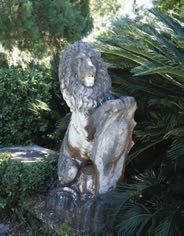

if you look at vintage photos of the jekyll island club, you may notice a windmill and water tower looming over the compound—a singular sight, taller even than the main buildings. In 1891, the club opted to erect the tower and windmill (a lowtech water pump) to replace leaky water tanks


in the club attic. The structures were ordered from A.J. Corcoran in New York, transported to Brunswick by rail, then ferried to the island. The man charged with assembly was one Torkel “Chips” Torkelson, a Norway native who worked as a ship’s carpenter and was called on for many Jekyll building projects. The structures rose behind the clubhouse annex, to the east.

By all accounts they did the job—until they got clobbered by weather. In 1896, club superintendent Ernest Grob wrote to Corcoran that his products performed beautifully, except during cyclones. Then came the 1898 Georgia Hurricane, the strongest storm in state history. After that debacle, which flooded the streets of Brunswick and wrecked newly built Chichota Cottage, Grob dashed off another letter to Corcoran: the windmill had been decimated, and he needed a new one.
As best as can be determined, the second tower
and windmill lasted for the next three decades. Then came the tempest of 1928. “Apparently they lost a lot of the beach, and oak trees came down and the windmill was damaged,” Marroquin says. At that point, Torkelson’s handiwork was a wash. The structures were dismantled by the next year.
57
56
"By all accounts, they did the job_until they got clobbered by weather."
archival paper: bigstock.com ; current-day chichota ruins photo: gabriel hanway
Beach VIEWS
Whether you’re looking for fun in the sun, solitude in nature, an amazing photo op, or tonight’s dinner, Jekyll’s broad coast awaits
 By BILL WARHOP
By BILL WARHOP
59 58
“On the right beach at the right time, you really can feel like you have it all to yourself,” says Ben Carswell, conservation director for the Jekyll Island Authority. Jekyll is one of only four barrier islands in Georgia that allow driving (all others are served by ferry), but cars are almost superfluous once you’ve arrived. With an off-street bike path and nary a hill in sight, Jekyll always has a beach within an easy stroll. From remnant forests to undulating dunes to oyster-rich estuaries, the coastline is rich with biodiversity, its very shape and constitution a lesson in marine geology and ecology. While there are multiple entry points across Jekyll’s ten miles of unbroken shore, we’ve highlighted four distinct stretches of sand for the unique experiences they offer.

Monuments
DRIFTWOOD BEACH curves like a shepherd’s crook along the island’s upper end. Here, Atlantic currents pound the forest’s edge, slowly exposing tree roots and toppling the arboreal natives closest to the surf. The process leaves behind a gnarled boneyard of live oak, pine, and cedar. Don’t let the gentle “Driftwood” moniker mislead you. Most of these relics are whole trees—or at least the core of them. Their roots splay like tentacles, and their limbs form snarled
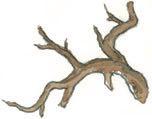
thickets that would keep Prince Charming out of Sleeping Beauty’s castle. A parking area about a third of a mile from the north end of Villas by the Sea leads to skeletal formations that stretch a quarter mile in each direction. Because it’s farther from the main tourist hub, Driftwood Beach often remains quiet despite its popularity. The St. Simons Lighthouse across the sound, visible on any clear day, and the occasional brightly colored hammock strung between limbs may be your only reminders of civilization.

61 60
It’s easy to get to Jekyll Island—and easy to lose yourself once there.
illustrations
by steve stankiewicz
The beach at GREAT DUNES BEACH PARK “can be one of the calmer places to get in the ocean, without the sometimes strong currents you can find on the ends of the island,” Carswell says. Great Dunes is popular for other reasons too: bathrooms, beach showers, picnic pavilions with charcoal grills, an events deck and gazebo, and ramp access through the dunes (beach-friendly wheelchairs are available for free). It’s perfect for families, especially those with small kids, and big gatherings. Summer sunshine brings sporty types to the sand volleyball pit and the enclosed turf bocce lane. And location, location, location: the public playground sits just across Beachview Drive, and the Beach Village shops and eateries are a few minutes’ stroll down the bike and pedestrian path. The park is a powerful testament to smart and eco-friendly redevelopment, with native plants incorporated into the landscape to minimize storm-water runoff. Signs near the boardwalks identify birds and sea turtles that rely on these protected dunes.


Play Date

62 63
Haven

The bustle of Great Dunes gives way to quieter SOUTH DUNES BEACH
PARK. The picnic area fronts a strip of palmettos, palms, and live oaks that anchors the dunes; go left up the stairs to the boardwalk that threads through the woods to the beach. In spring and summer, look for black skimmers, red knots, ruddy turnstones, and oystercatchers; in winter, watch the piping plover skitter. The ribs of the previous walkway, to the south, are being slowly reclaimed by the shifting dunes.
Tidal pools flow back to the sea at low tide, carving sweeping runnels across the beach that wash tiny crabs out to the gulls and royal terns (or common, Forster’s, or Caspian terns) gathered by the shoreline. Try to identify the birds you see and the tracks of four-legged critters you don’t. Bobcat? Raccoon? Gray fox? Those that fan out and back to the boardwalk belong to dogs, which are not allowed on the beach south of the picnic area.
Head to GLORY BEACH PARK for an even more remote excursion. This stretch serves as a protected nesting area for shorebirds such as the Wilson’s plover, which Georgia lists as a threatened species. Just down from South Dunes, it honors the 1989 Civil War film Glory whose beach scenes were filmed on-site. All the way south at Jekyll Point, where Glory Beach merges with St. Andrews Beach, the mast of the sunken Mary Ann shrimp boat peeks above the sand as it is gradually swallowed by the decay of the island’s southern tip. Here, the beach drops off steeply into the ocean, bringing frolicking dolphins and porpoises as close as fifteen feet from the shoreline at low tide.


Glory Beach Park (left and bottom, center) and its neighbor, South Dunes Beach Park, are protected sanctuaries for shorebirds and quieter destinations for nature lovers. Look for the mast of a sunken shrimp boat (bottom right) on the island’s southern tip.




64 65
“Here, the beach drops off steeply into the ocean, bringing frolicking dolphins and porpoises as close as fifteen feet from the shoreline at low tide.”
ST. ANDREWS BEACH PARK
stretches from Jekyll Point up the southwestern coast and is steeped in marsh tides and history. One of the last known ships to bring enslaved Africans to the United States, the Wanderer anchored here in 1858, dooming some 400 human captives to slavery. From 1950 to 1964, historic St. Andrews was the only public beach in Georgia to allow African Americans, featuring its own segregated resort and music venue, until federal civil rights laws opened all beaches to all people.

Catch


Today, high tides surge to the tree line, sculpting a stretch of wind-carved and sun-faded trees to rival the wonders at Driftwood Beach; one sprawling live oak stands upright with roots exposed as if plucked from the earth and dropped atop the sand. An interpretive trail about the Wanderer leads to a wildlife observation platform that overlooks beds of eastern
oysters. Look for the tracks of cute but carnivorous mink that come down to the water to sneak away with fresh fish. And speaking of seafood, no feast is more fulfilling than a Lowcountry boil from your own fresh catch. The mix of marsh and ocean currents yields a salty soup that nourishes shrimp, fish, and crab, making St. Andrews one of the best spots on the island for seining. Cast your line for fish year-round, but shrimping is seasonal, usually from early summer till late fall (though the 2017 season was extended into the middle of January). Make sure you have a valid Georgia fishing license and know restrictions, seasons, and limits; check information with the Coastal Resources Division (coastalgadnr.org), and buy or rent gear at the Jekyll Fishing Center on the northwestern tip of the island.
66
67
“The mix of marsh and ocean currents yields a salty soup that nourishes shrimp, fish, and crab, making St. Andrews one of the best spots on the island for seining.”
By TONY REHAGEN
Locals MEET THE
What’s it like living on a tiny barrier island that happens to be a state park? Old and new residents share their stories

Jekyll Island is a small town—some 1,000 people occupying a cozy 5,700 acres. That’s not to say everyone knows everyone, but there’s an inherent neighborliness that comes from sharing such a small and special place. Whether they are permanent residents, part-time snowbirds, or expats who have moved away, the people who have called Jekyll home are connected to the land. And to each other.

69
Photography by GREGORY MILLER
Maggie and Chris Zerkus
Joey Harrison
maggie zerkus had only ever dreamed of becoming a jekyll islander. she and her husband, chris, gradually fell in love with the golden isle as regular vacationers from metro Atlanta and other homes throughout the Georgia mainland, but the idea of one day putting down roots in the barrier sand had always seemed out of reach.
That is, until August 2016, when a unit in the new shoreside Cottages on Jekyll Island development went up for sale, and the couple decided to take a chance. Maggie, a writer who works from home, had eagerly anticipated many aspects of being a full-time Jekyll resident—the comfortable climate, the peace and quiet of the day-to-day, and the ability to jump on her bike and breathe in the island’s abundant natural beauty. But not knowing a single one of her new neighbors, she didn’t expect to be initiated so swiftly into a tight-knit community. “Some of our neighbors who have been here a long time were practically on our doorstep welcoming us,” she says.
Jekyll is home to so many part-time seasonal residents, plus a constant stream of vacationers, that a person might go months or even years without encountering the owners of the house next door. But residents find a common bond in coexisting with tourists—and alligators and turtles. Says Maggie, “It’s been an adjustment to live someplace where you become protective of the beach and the alligators and bobcats and the driftwood even. You become protective of the environment around you. You have the alligators and the wild animals here that are just as important as the people. Most places they haul the alligator off. Here, you’re told to live with
it. It’s their home and you’re living in their home.”
When Hurricane Irma hit last September, residents helped board up each other’s windows and checked in on absent owners’ damages when the winds had subsided. Facebook groups keep snowbirds and summer vacationers in the loop, but for full-time residents like the Zerkuses, there are plenty of opportunities to social network the old-fashioned way. Maggie attends dinners and high tea at the Jekyll Island Club Resort’s Grand Dining Room “to feel like part of the history of that building.” Chris is a member of the Rotary Club, and they both go to church at Jekyll Presbyterian Community Church. She is part of the Jekyll Island Arts Association, the historical society, and the Cottages neighborhood association.

During the day, when she can’t focus on her writing, Maggie can also just hop on her bike and explore the island, bumping into neighbors along the way. “People here are happy to be here,” she says. “So many people are in places because of their jobs. Almost everyone is here because they’ve chosen to live here.”

70 71
@
The Zerkuses bought their townhouse in 2016 in one of two newly developed neighborhoods—the first such residential real estate on the island in decades.
MEET THE ZERKUSES instant connections
sticks and bricks
wanda culpepper is a retired teacher splitting her time between athens and jekyll—but her heart is always in the latter. She and her husband, John, own a two-story brick home that was built in the 1950s as part of the construction boom of the early “state era,” when the State of Georgia first opened the island to public development. Where once only wealthy barons of industry could afford to boat to their mansions on Jekyll, the new causeway welcomed middle- and working-class families to erect more modest ranches and bungalows—like the Culpeppers’ four-bedroom, tucked between the beach and Jekyll Island Golf Club. The state initially distributed lots via lottery; John’s father came along a little later and bought their house in 1966. It has remained in the family ever since.
Wanda remembers visiting the island at that time, when everything was new and gleaming, from the (now “old”) convention center with its pristine blue swimming pool to the shopping centers and restaurants. But
the modernization was not rampant. After all, Jekyll was now a state park, and the state mandated that development be held in balance with the natural world—no more than 1,675 developed acres (to 3,920 undeveloped acres), by statute. Residents don’t technically own the land, just the “sticks and bricks” erected in and above the ground. “We have a ninety-nine-year lease from the Jekyll Island Authority,” says Wanda. “We won’t have to worry about it—our children can take care of that.”

However, the Culpeppers and other residents must adhere to the guidelines of the Jekyll Island Authority, a landlord of sorts. When the Culpeppers wanted to add on to their house, they had to submit the plans, get the necessary permissions, and make three $150 payments to plant trees that would replace the three they felled in their expansion. “They are very particular about what goes on, but I think that’s good,” says Wanda. “This is our piece of heaven, and we want it to stay that way.”

72 73
brian austin lee
MEET THE
@
Wanda and John Culpepper’s home has been in their family for five decades, though the state of Georgia owns the land.
CULPEPPERS
joey harrison grew up on the island, raised by his grandmother and his grandfather, who was director of services and development for the Jekyll Island Authority in the 1980s. The family lived in the Walter Furness Cottage, a stately Victorian built in 1890 for Furness, an architect and one of the founders of the Jekyll Island Club. The wood-framed building, once owned by newspaper magnate Joseph Pulitzer, served as the infirmary for wealthy guests of the private hunting club. Beyond that historic link to some of the land’s earliest blue-blood inhabitants, Joey is connected by his


own memories, forged in the freedom and solitude of the barrier island. “It was amazing because at ten years old, I could just walk out of the house at 8 a.m., hop on my bike, and be gone the entire day,” he says. “There was no check-in. No feeling of insecurity. No crime, really. Everybody knew everybody.” At the time, he says, Jekyll was a tourist destination stuck in the 1950s, with development that lagged behind. But with no cable TV, no mall or arcades, he and his band of friends rode bikes on dirt trails, shot basketball at the Wanderer Motel, played pickup football or softball on the 4-H Center fields, or hit the water skis at the old Ski Rixen Pond—places that no longer exist as they did thirty years ago but whose names are currency among longtime residents. Animal encounters were an unremarkable fact of life. “I literally shared space with gators and deer and never thought twice about it,” he says. “I would fish a lot on the golf course
lakes, and gators were everywhere. As long as they were in the water I didn’t worry much. If they were on land I just made sure to keep my distance.”
Joey left for the mainland after high school, but he eventually returned to live in nearby St. Simons with his own family. When they visit Jekyll, they now get to see the extensive revitalization efforts of the last decade. Gone is the isolation from society that once, for better and for worse, defined the island. But even now, residents don’t have to venture too far from the developed areas to lose themselves in the bottomless black of nighttime or come face-to-face with deer and foxes and sea turtles.
Today, when they need to escape, Joey and his children return to Jekyll, where he can share his boyhood memories and return to some of that solitude. “My kids are amazed by some of my experiences,” he says. “They love Jekyll Island.”

74 75
archival image courtesy of the jekyll island museum archives
MEET THE HARRISONS
@
Joey Harrison (left) grew up in the historic infirmary (below). His grandfather, who worked for the Jekyll Island Authority, left his own mark on the property by adding a rope swing (above).
living with history
THE SEAFARER

The stillness of late afternoon is fractured by the rumble of the boat's outboard motor revving up. The craft picks up speed, stern dipping into the estuarine waters of the Intracoastal Waterway and cutting deeper and deeper into the tranquil surface. A pair of pelicans looks down from overhead; the calls of cormorants sunning on the pilings are briefly stifled. The water is unzipped. Waves slap against the hull. Sometimes dolphins swim alongside, playing in the wake, following the vessel as it retraces a centuries-old course to the island—a path that is quickly swallowed by the waterway, restoring nature’s calm as the clamor fades. —tony rehagen

PATHS brian austin lee

14-16, 2018
Come experience the Southeast’s
September
jekyllisland.com/shrimpgrits






































 BY BILL WARHOP
BY BILL WARHOP








 BY CANDICE DYER
PHOTOGRAPHY BY GABRIEL HANWAY
Plant Whisperer
Gawron in the historic Avenue of Palms, which he helped restore
BY CANDICE DYER
PHOTOGRAPHY BY GABRIEL HANWAY
Plant Whisperer
Gawron in the historic Avenue of Palms, which he helped restore





 BY SCOTT FREEMAN
BY SCOTT FREEMAN











 By JUSTIN HECKERT
By JUSTIN HECKERT
































 By BILL WARHOP
By BILL WARHOP



























